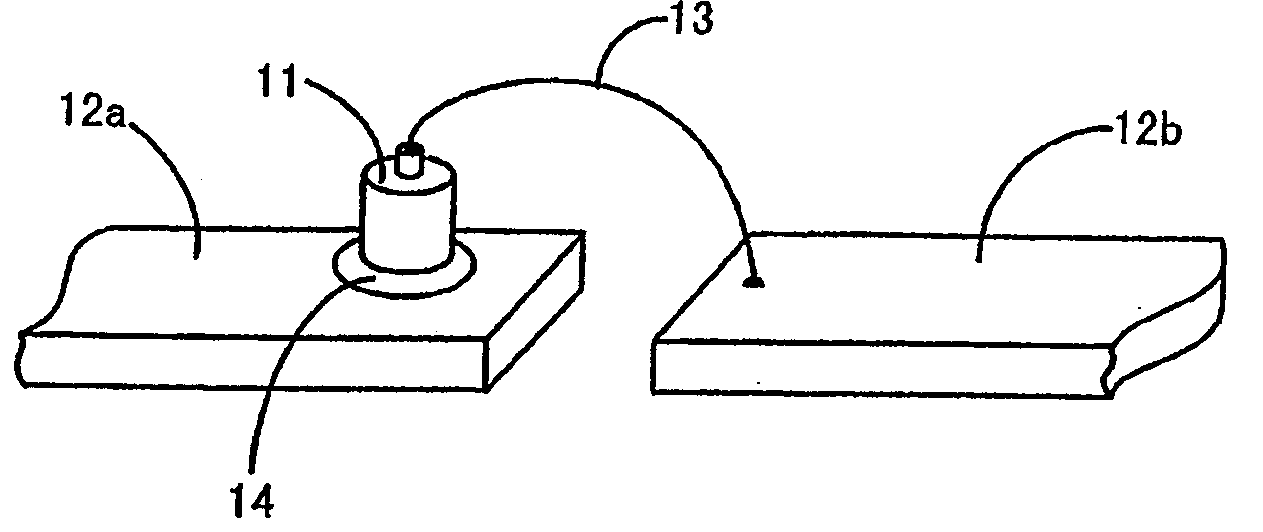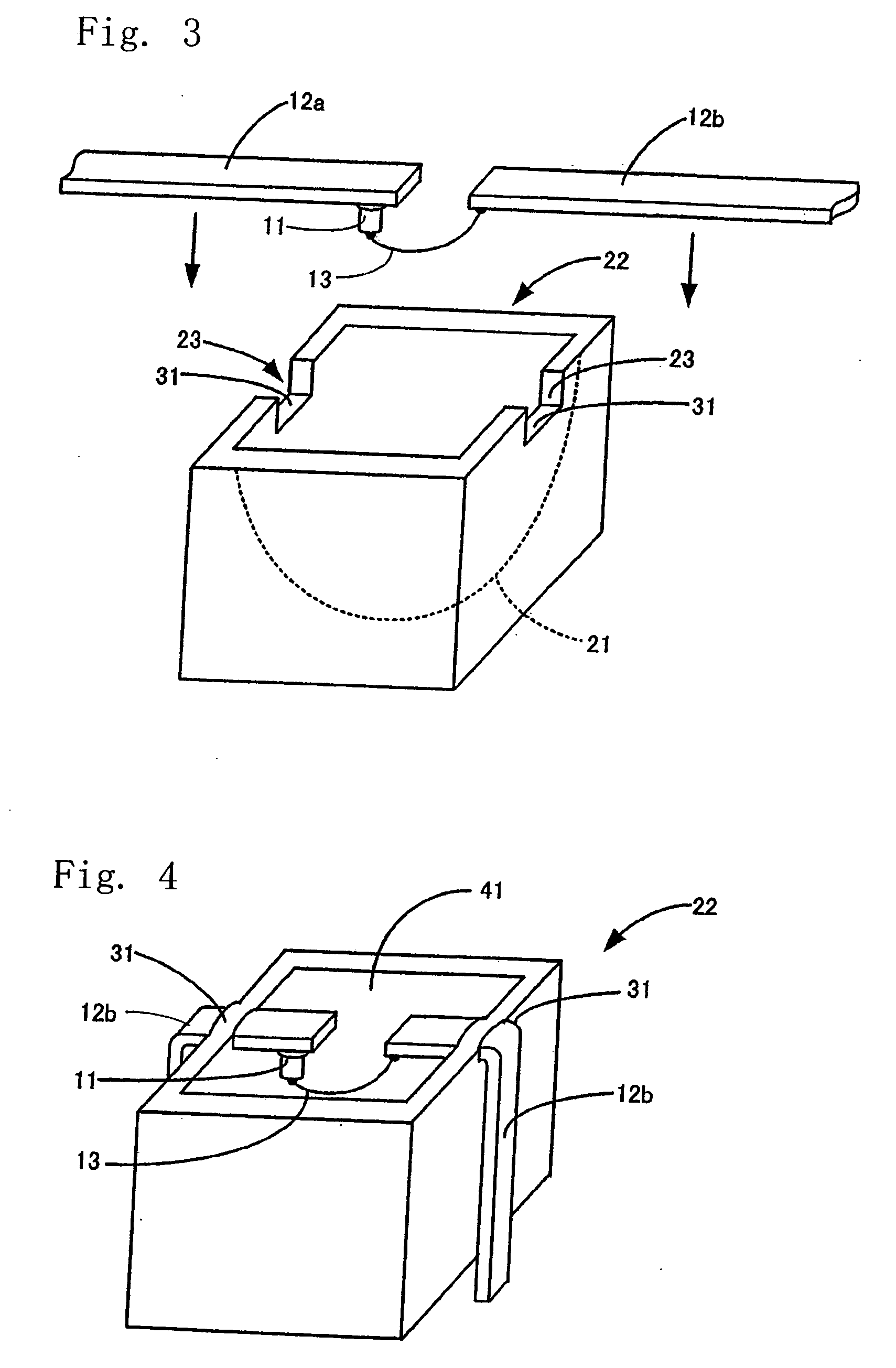Light emitting diode and process for producing the same
- Summary
- Abstract
- Description
- Claims
- Application Information
AI Technical Summary
Benefits of technology
Problems solved by technology
Method used
Image
Examples
Embodiment Construction
[0037] Hereinafter, a preferred embodiment of the present invention will be described in detail with particular reference to FIGS. 1 to 5.
[0038]FIG. 1 illustrates a schematic diagram used to explain a light emitting element mounted on a lead used in a light emitting diode according to the present invention. The light emitting element 11 is rigidly connected at one end with a lead 12a by means of an electroconductive bonding agent 14 and at the opposite end with a lead 12b through a gold wire 13. The light emitting element so connected with the leads is prepared in readiness for the practice of the present invention.
[0039]FIGS. 2a and 2b illustrate a schematic perspective view and a schematic side view of a casing used in the light emitting diode of the present invention. As shown in FIGS. 2a and 2b, the casing 22 is made of a synthetic resin in its entirety and is formed with a concave cavity defining a concave surface which is in turn vapor deposited with a plated layer of alumin...
PUM
 Login to View More
Login to View More Abstract
Description
Claims
Application Information
 Login to View More
Login to View More - R&D
- Intellectual Property
- Life Sciences
- Materials
- Tech Scout
- Unparalleled Data Quality
- Higher Quality Content
- 60% Fewer Hallucinations
Browse by: Latest US Patents, China's latest patents, Technical Efficacy Thesaurus, Application Domain, Technology Topic, Popular Technical Reports.
© 2025 PatSnap. All rights reserved.Legal|Privacy policy|Modern Slavery Act Transparency Statement|Sitemap|About US| Contact US: help@patsnap.com



